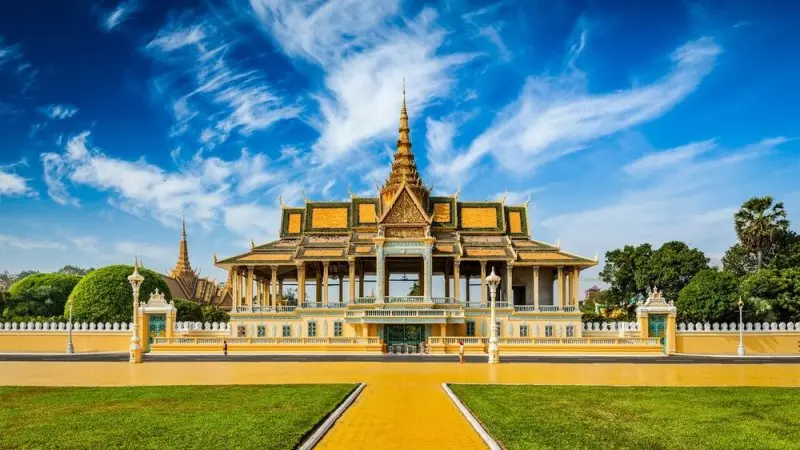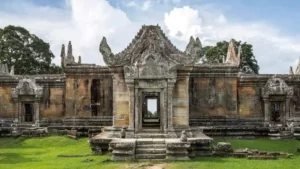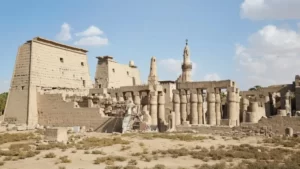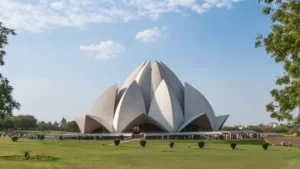History
Nestled in the heart of Phnom Penh, Cambodia, the Royal Palace stands as a remarkable testament to the country’s rich heritage and regal traditions. Constructed in the 19th century, the palace has served as the official residence of the Cambodian royal family for generations.
Commissioned by King Norodom I in 1866, the Royal Palace’s architectural design harmoniously blends traditional Khmer influences with French colonial elements. Over the years, the palace complex has undergone expansions and renovations, reflecting various periods of Cambodia’s history.
Why Visit
A visit to the Royal Palace offers a captivating journey through Cambodia’s cultural tapestry, immersing visitors in the grandeur and elegance of its royal past. The palace stands as a symbol of national pride, offering a glimpse into the country’s regal traditions and architectural brilliance.
Exploring the Royal Palace provides a unique opportunity to witness the splendor of Khmer craftsmanship, with intricate carvings, gilded accents, and meticulous attention to detail adorning the buildings. It is a chance to marvel at the exquisite blend of Khmer and European architectural styles, exemplifying the nation’s cultural fusion.
Beyond its architectural allure, the Royal Palace holds great historical and spiritual significance. It has witnessed the triumphs and tribulations of Cambodia’s past, making it a captivating destination for history enthusiasts seeking a deeper understanding of the country’s heritage.
Location and Route
Situated along the banks of the mighty Mekong River, the Royal Palace occupies a prime location within Phnom Penh, Cambodia’s capital city. It is nestled within the confines of the larger Royal Palace complex, which includes additional structures such as the Silver Pagoda and various gardens.
Phnom Penh is accessible by air, land, and water, with international flights and overland routes connecting the city to neighboring countries. Upon arrival in Phnom Penh, reaching the Royal Palace is convenient via tuk-tuks, taxis, or even by foot, as it is centrally located in the city.
When to Visit
The Royal Palace welcomes visitors throughout the year, offering a fascinating experience regardless of the season. However, it is advisable to plan your visit during weekdays to avoid larger crowds and ensure a more intimate exploration of the palace grounds.
To fully appreciate the beauty and serenity of the complex, it is recommended to allocate a few hours for your visit. This will allow ample time to explore the palace buildings, admire the architecture, and delve into the historical and cultural treasures it holds.
What to See
The Royal Palace complex boasts an array of captivating sights and architectural marvels that capture the essence of Cambodia’s royal heritage.
The Throne Hall, also known as the Preah Tineang Tevea Vinichhay, serves as the centerpiece of the palace. Its distinctive Khmer design, with towering spires and ornate decor, stands as a testament to the country’s architectural prowess. The hall has been a venue for various royal ceremonies and is still used for official events today.
Adjacent to the Throne Hall lies the Moonlight Pavilion, a stunning open-air pavilion that once hosted classical dance performances and entertainment for the royal family. Its delicate design and graceful structure add to the palace’s overall charm.
One of the most revered structures within the complex is the Silver Pagoda, also known as the Temple of the Emerald Buddha. Here, visitors can marvel at the stunning floor adorned with over 5,000 silver tiles, each weighing over a kilogram. The pagoda houses a magnificent collection of Buddha statues, including the revered Emerald Buddha, a precious and sacred statue carved from a single piece of jade.
Within the palace grounds, lush gardens and manicured landscapes provide serene spaces for contemplation and leisurely strolls. The gardens showcase a variety of indigenous plants and offer a tranquil escape from the bustling city outside.
In conclusion, a visit to the Royal Palace of Cambodia promises a captivating journey through the country’s vibrant history, architectural brilliance, and cultural heritage. It is an opportunity to immerse oneself in the grandeur of Cambodian royalty, admire the intricate craftsmanship, and gain a deeper appreciation for the nation’s traditions.
Whether you are a history enthusiast, a culture lover, or simply seeking an awe-inspiring experience, the Royal Palace is sure to leave an indelible impression and create cherished memories of Cambodia’s regal splendor.
Unveiling the Splendor of Cambodia’s Royal Palace: A Testament to History, Culture, and Beauty
History
Deep within the heart of Phnom Penh, Cambodia, lies the Royal Palace—a magnificent testament to the country’s rich heritage and regal traditions. Erected in the 19th century, this grand palace has stood as the official residence of the Cambodian royal family for generations.
Initiated by King Norodom I in 1866, the architectural design of the Royal Palace beautifully combines traditional Khmer influences with elegant French colonial elements. Throughout its existence, the palace complex has undergone expansions and renovations, reflecting different periods of Cambodia’s dynamic history.
Why Visit
Embarking on a journey to the Royal Palace offers a captivating glimpse into Cambodia’s cultural tapestry, immersing visitors in the opulence and grace of its royal past. The palace symbolizes national pride, granting insight into the nation’s regal traditions and architectural brilliance.
Exploring the Royal Palace presents a unique opportunity to witness the splendor of Khmer craftsmanship, with intricate carvings, gilded accents, and meticulous attention to detail adorning the structures. It is a chance to marvel at the seamless fusion of Khmer and European architectural styles, embodying the country’s vibrant cultural heritage.
Beyond its architectural allure, the Royal Palace holds significant historical and spiritual value. As a witness to Cambodia’s triumphs and tribulations, it becomes a captivating destination for history enthusiasts seeking a deeper understanding of the country’s storied past.
Location and Route
Gracefully situated along the banks of the mighty Mekong River, the Royal Palace enjoys a prime location in Phnom Penh, the capital city of Cambodia. The palace forms the centerpiece of the larger Royal Palace complex, encompassing additional structures such as the Silver Pagoda and various picturesque gardens.
Phnom Penh is easily accessible by air, land, and water, with international flights and overland routes connecting the city to neighboring countries. Upon arrival in Phnom Penh, reaching the Royal Palace is a breeze, as it is centrally located within the city. Tuk-tuks, taxis, and even walking offer convenient means to reach the palace complex.
When to Visit
The Royal Palace welcomes visitors throughout the year, providing a fascinating experience regardless of the season. However, planning your visit on weekdays is advisable to avoid larger crowds and ensure a more intimate exploration of the palace grounds.
To fully appreciate the beauty and tranquility of the complex, allocating a few hours for your visit is recommended. This allows ample time to leisurely explore the palace buildings, admire the architectural marvels, and delve into the historical and cultural treasures they hold.
What to See
The Royal Palace complex boasts an array of captivating sights and architectural wonders that encapsulate the essence of Cambodia’s royal heritage.
The Throne Hall, also known as the Preah Tineang Tevea Vinichhay, serves as the crowning jewel of the palace. Its distinctive Khmer design, characterized by soaring spires and intricate ornamentation, stands as a testament to the nation’s architectural prowess. Throughout history, this grand hall has hosted numerous royal ceremonies and continues to be a venue for official events today.
Nestled adjacent to the Throne Hall is the Moonlight Pavilion, an enchanting open-air pavilion that once served as a venue for classical dance performances and entertainment for the royal family. Its delicate design and graceful structure add to the palace’s allure, transporting visitors to a bygone era.
One of the most revered structures within the complex is the Silver Pagoda, also known as the Temple of the Emerald Buddha. Stepping inside, visitors are greeted by a breathtaking floor adorned with over 5,000 silver tiles, each weighing more than a kilogram.
The pagoda houses an impressive collection of Buddha statues, including the venerated Emerald Buddha—an exquisite and sacred statue intricately carved from a single piece of jade.
The palace grounds also feature lush gardens and meticulously manicured landscapes, providing serene spaces for contemplation and leisurely strolls. These verdant havens showcase an array of indigenous plants, offering a peaceful escape from the bustling city outside.
In conclusion, a visit to the Royal Palace of Cambodia promises an immersive journey through the nation’s vibrant history, architectural opulence, and cultural legacy. It offers an opportunity to bask in the grandeur of Cambodian royalty, marvel at the intricate craftsmanship, and gain a profound appreciation for the nation’s enduring traditions.
Whether you are a history enthusiast, a culture aficionado, or simply in search of awe-inspiring beauty, the Royal Palace will leave an indelible impression and create cherished memories of Cambodia’s regal magnificence.







